Cross-country road trips are a fun family activity, even with the youngest travelers. However, traveling across the country – especially with young children – means it’s necessary to know how the car seat laws differ from state to state.
In this article, we’ll talk through the Kansas car seat laws for all types of car seats, including infant, convertible, booster, front-facing, and rear-facing. We’ll also discuss the many differences between front-facing and rear-facing seats for your children.
Whether or not you’re from the state, it’s useful to know the car seat laws in Kansas because they can differ from other places in the United States.
Knowing and being comfortable with the car seat laws in Kansas is the best way to ensure your little ones are safe throughout your travels. Read our article below to understand the requirements for each type of car seat you can use while traveling in Kansas.

Kansas Child Seat Laws
Rear-Facing Car Seat Laws in Kansas
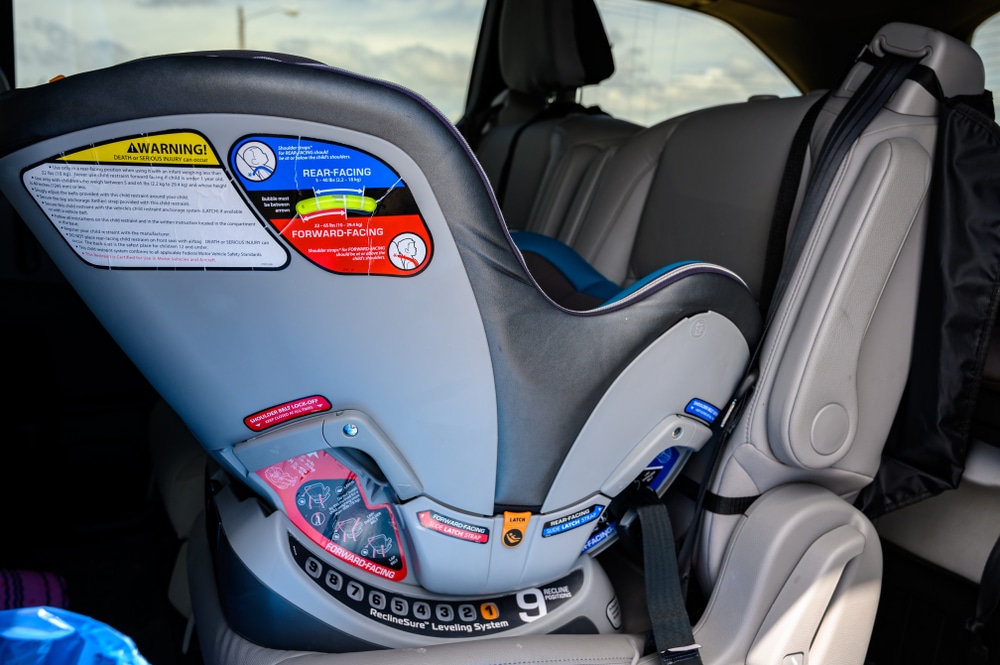
According to the limitations noted on your seat’s manufacturer, rear-facing car seats should be used as long as possible.
Rear-facing car seats are generally much safer than the front-facing counterparts. Your child should use a rear-facing seat until they are four years old or outgrow the weight or height limitations.
Convertible car seats and 3-in-1 car seats are often fixed to be used in a rear-facing position. Your child can use a rear-facing seat from birth until they are about three or four years old, usually.
Once your child has reached the height and weight limitations of their convertible rear-facing car seat, they can transition to a front-facing booster seat. Front-facing seats should only be used for tall and heavy children to utilize the built-in seat belt correctly.
Front-facing seats are just as safe for your children as rear-facing seats, as long as they meet the requirements for those seats.
Front-Facing Seat Laws in Kansas
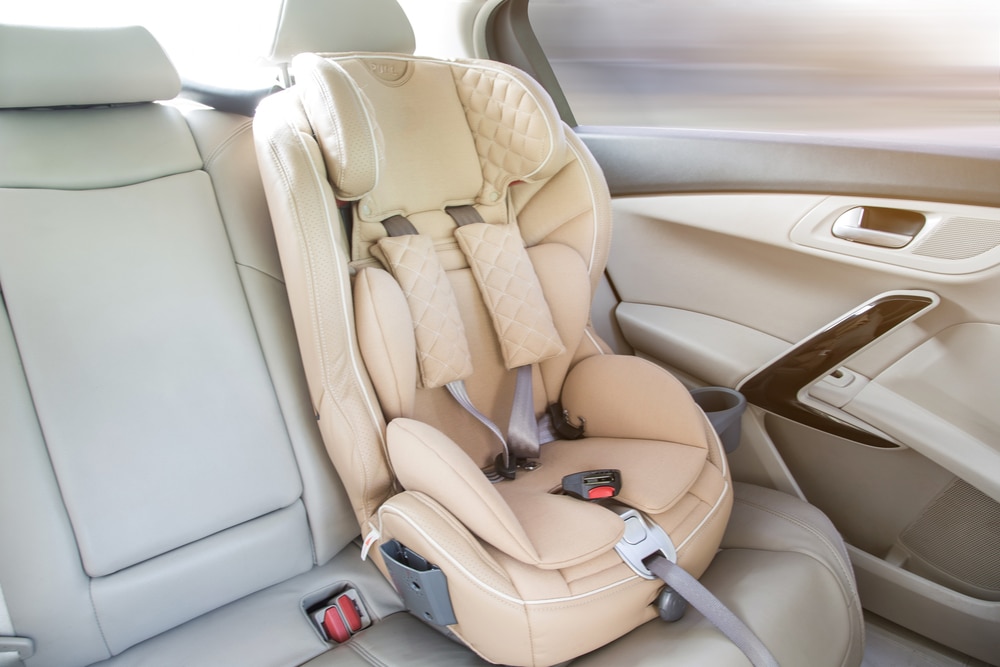
Even though your child may sit in a front-facing seat around this age, the child should still always be seated in the back seats of the car.
Kansas law dictates that every child who is thirteen years old or younger should sit in the car’s back seat. You are only legally eligible to sit in the car’s passenger seat when you are fourteen years old or older.
Infant Car Seat Laws in Kansas
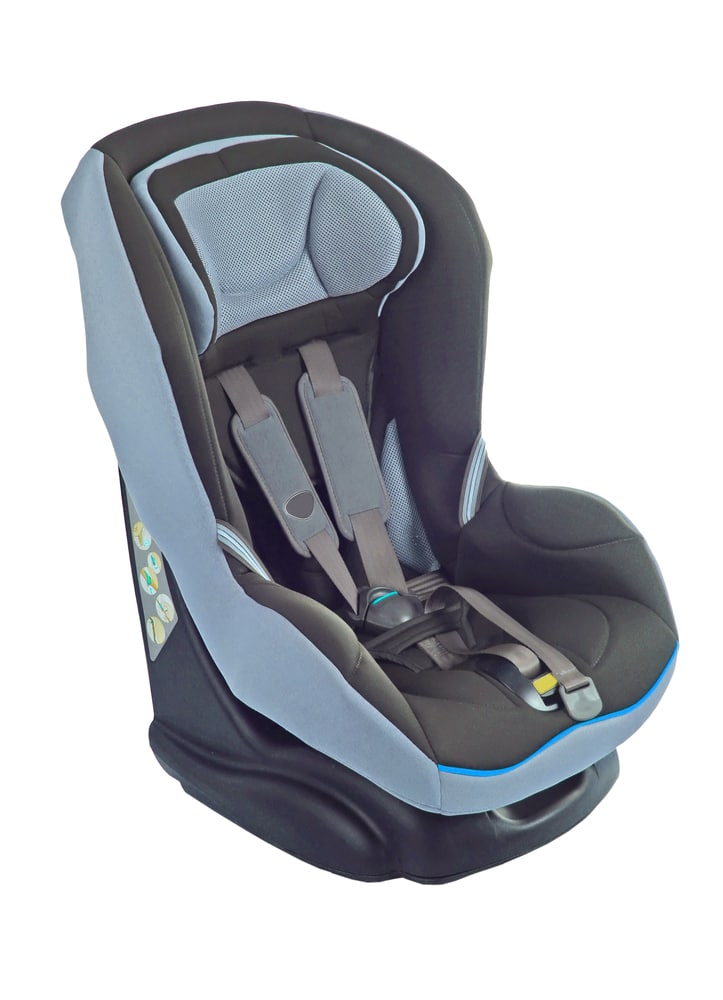
Kansas Law: 0-30 pounds, up to 30 inches tall
From the time of birth, until your baby is about 30-35 pounds, they should be securely fastened in an infant-sized car seat. These seats are usually detachable from strollers and will likely be used to bring your baby home from the hospital on that very first day.
Infant car seats are always manufactured to face backward to protect your baby in the case of a car accident. These types of seats usually have a base that is securely fastened with the seat belt of the car and is used to secure the detachable seat when in use. Your baby should fit comfortably in the infant seat until they are about one year old.
The exact specifications for each seat will vary according to the manufacturer. Be sure to check the weight and height limitations for every car seat your purchase.
Convertible Car Seat Laws in Kansas
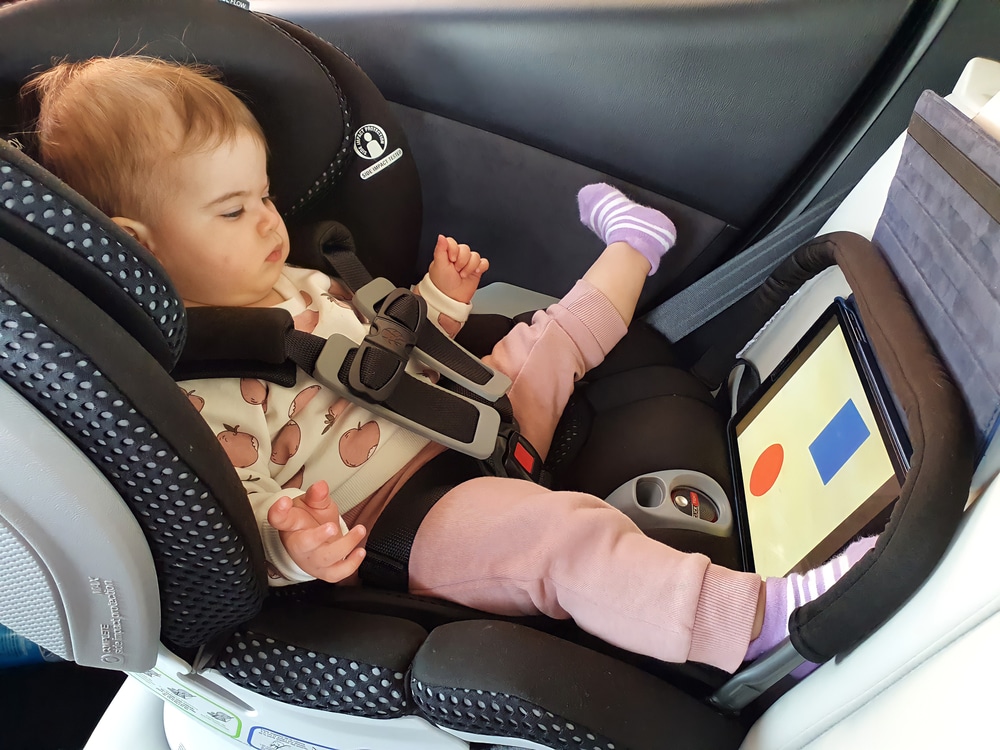
Kansas Law: 20- 75 pounds, up to 50 inches tall
Once your child has outgrown their infant seat, you will need to transition to a rear-facing convertible car seat. Rear-facing convertible seats are similar to infant car seats, except they do not fit into a base in the car the way an infant seat does.
Convertible seats can be frustrating to deal with because they require you to belt them into the car in a way where they will not be easily removed. This security helps to keep your child safe in the case of an accident.
Some children may also dislike this seat style because, as they grow, their feet are kicking against the seat behind them. Though the positioning may be uncomfortable, experts guarantee that this type of rear-facing seat is the safest option for your child within the age range of 1-4 years old.
Kansas law dictates that you should use a rear-facing convertible seat for your child until they are around the age of four or between 65-80 pounds, whichever comes first. Seat manufacturers will vary regarding on the weight limits allowed for each type of convertible car seat.
Most seat manufacturers will also include a height limit to consider so your child is not too tall for their convertible car seat. Usually, once the child is around four feet tall, it is time to transition to a booster seat.
Booster Seat Laws in Kansas
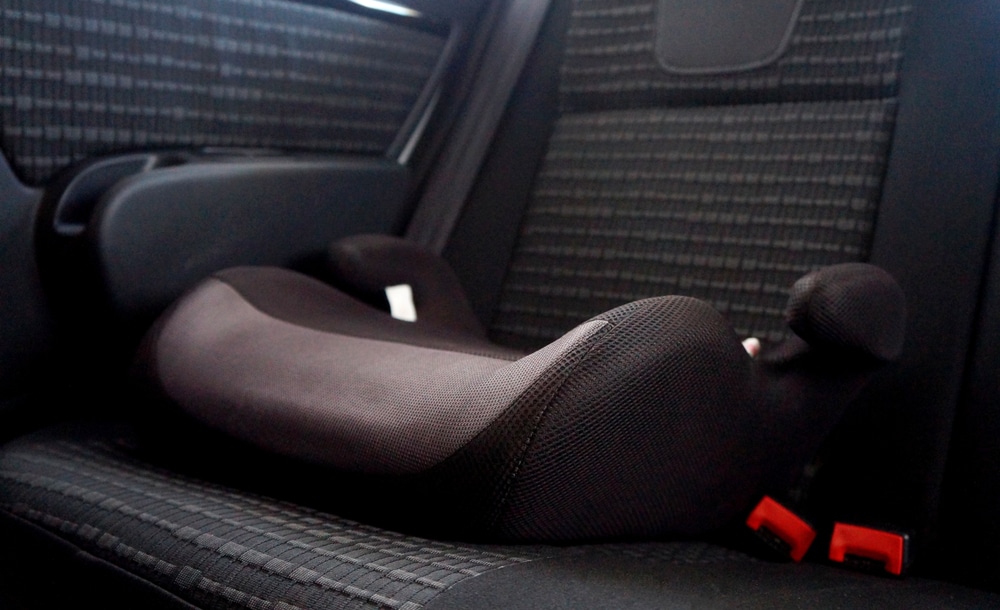
Kansas Law: 40-120 pounds, up to 60 inches tall
The Kansas Child Passenger Safety Act from 2006 requires children ages 4 through 7 to be in booster seats that are properly secured. Once your child is about four years old and too heavy and/or too tall for a convertible seat, it’s time to start using a booster seat in the car.
Booster seats are made to simulate wearing a seat belt in a normal seat for a child that is just a little too short or too small for the seat belt to fit appropriately. During an accident, a booster seat can reduce the risk of injury by 59%.
The seat belts in every car should be low and tight across the wearer’s lap, with the shoulder strap resting on the chest and shoulder instead of the neck.
Booster seats allow a little extra height for your child to fit in the seat belt appropriately. Booster seats should always face forward and be positioned in the middle of the seat before your child sits down. Kansas booster seat laws are very similar to booster seat laws in most other states.
Kansas Seat Belt Laws
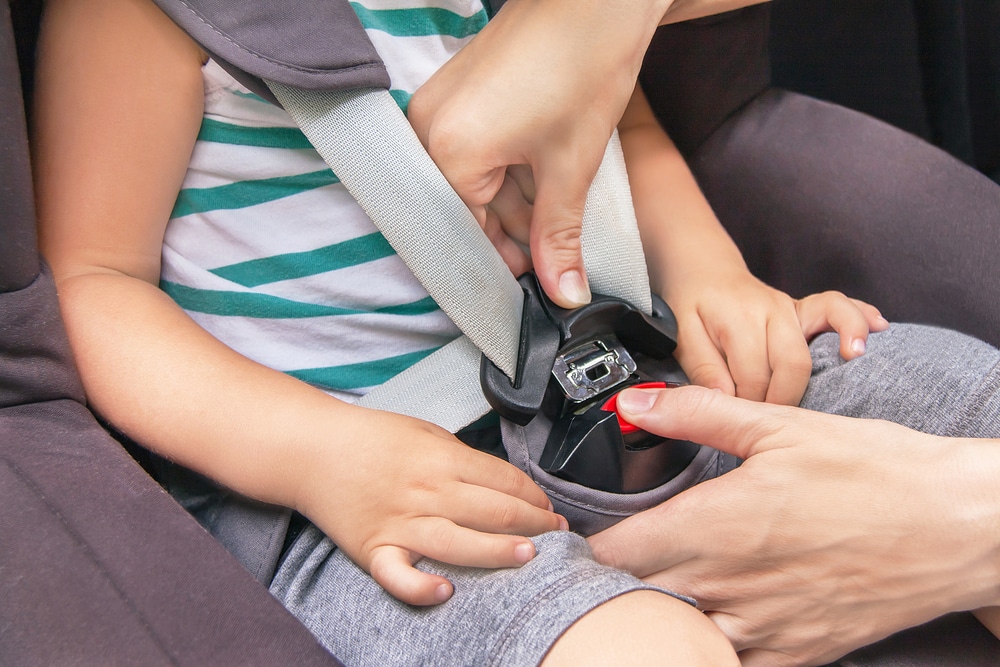
In Kansas, like every other state, the seat belt must fit correctly on each rider in the car.
The seat belts should be secure across every rider’s upper thighs to ensure they are safe in their seat in the case of an accident. The seat belt’s shoulder part should be snug and secure against the rider’s chest and shoulder.
To ride in a seat without a booster seat, you should be at least 120 pounds and around 50-58 inches tall. Experts set these parameters to ensure that each rider is safe when seated in a vehicle and secured by an in-car seat belt.
See Related States: California Child Safety Laws | Ohio Child Seat Laws | Tennessee Car Seat Laws | Connecticut Child Safety Laws
Final Summary
In short, the car seat laws dictated by the Kansas state government do not differ drastically from the laws in many other states, but it is important to take them seriously.
Besides the safety measurements Kansas car seat laws put in place, a violation of the Child Passenger Safety Act could land you a $60 fine, plus court costs. Though the fee will be waived if you prove you’ve purchased an appropriate car seat, you will still be charged the cost of court..
When traveling with a child, the most important thing to remember is that their height and weight should be within the parameters dictated by every type of car seat you may use throughout your child’s life. You don’t want to place a child that is too light in a booster seat, nor do you want to place a child that is too tall or heavy in an infant seat.
While on the road, your children’s safety is directly tied to the type of seat they are sitting in while traveling. Be sure to refer to the seat’s manuals when purchasing any seat to use in the car in Kansas. If you have any further questions regarding your child’s safety and the type of car seat that should be used, refer to our website for further explanations.






